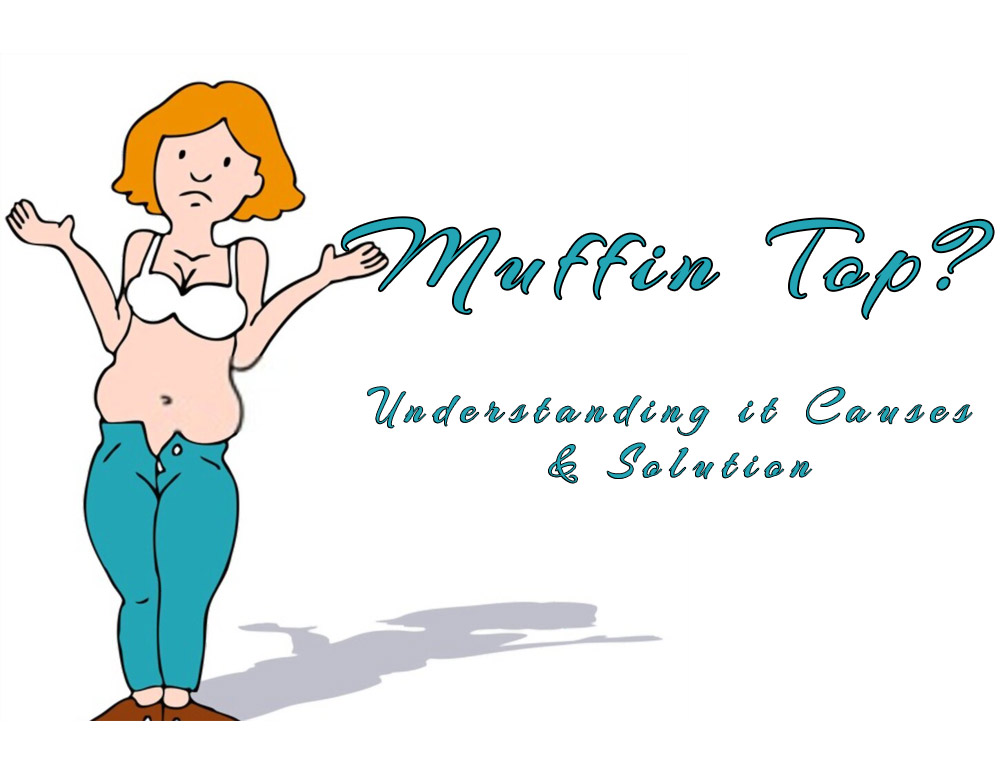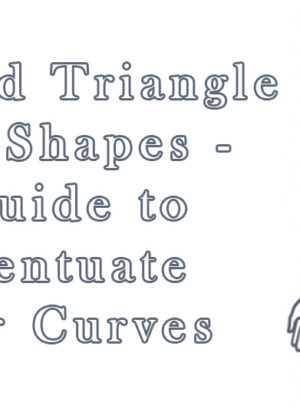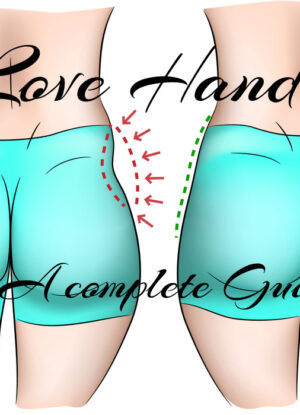No products in the cart.

Muffin Top – Understanding it Causes & Solution
“Muffin top” is the bulgy area of your midsection that interferes with your trim and slim look whenever you wear slim-fitting clothes. A muffin top and large belly don’t just disrupt your wardrobe choices. This fat in excess does not help your health; it is also damaging to your look.
The scary part is that you could waste time removing the extra flesh on the wrong approach. Long hours spent in all the sit-ups in the world won’t release your round waist or rid you of a muffin top. What can help is a complete exercise plan and a proper, low-calorie diet, plus other factors inclusive of a waist trainer to help you slim your midsection.
These strategies require a lot of patience to give results and make it more likely you’ll get lasting results. It is important to note that shrinking your belly’s overall width and bulk may prove easier than trimming the last bit of fat on your tummy. Unless you can tuck all that jelly into a pair of high-waisted jeans, these probably aren’t the curves you want to show off on your figure.
Whatever your weight loss reasons are (1) for health reasons, (2) to lessen the risk of disease, (3) or you want to increase self-confidence in your skin (4) muffin top reduction – tightening up your belly region can be challenging.
The excess fat molecules accumulating around your waist are annoying. It could lie deep in your torso, and it can even surround your intestines, liver, and other vital organs. Although having a round tummy seems harmless, it doesn’t look appealing and interferes with your fabulous trim-look goals but hold on. You need to understand the different types of belly fat.
Understanding Muffin Top Fat
The fat in the abdominal area is made of two different types: Visceral and Subcutaneous Fat.
Visceral fat offers a bit of padding and wraps around your vital organs. Sadly, too much visceral fat can be detrimental to your health in the long term. Excess visceral fat can also put too much pressure on organs like the liver and heart, disturbing their ability to function correctly.
The second type of fat: Subcutaneous fat makes up the mass of fat found on the body. It is located just under the skin. This type of fat serves the body in five ways:
- It insulates the body.
- It stores the energy the body needs to function.
- It offers padding and protection in the event of a fall.
- It attaches your skin to your muscles and bones.
- It provides a pathway for nerves and blood vessels to travel between your muscles and skin.
Visceral Fat versus Subcutaneous Fat.
Subcutaneous fat that hides under the skin as “love handles” or cushioning on the thighs, buttocks, or upper arms may be fashionably challenging, but it is harmless.
However, the visceral fat that amasses around abdominal organs is active metabolically. Plus, it has been linked to a host of serious disease risks like heart disease, cancer, and dementia. So, you might need to discuss with your physician to understand the type of muffin top you carry around?
Causes of Muffin Top
- Refined Sugar Consumption.
- Stress.
- Sleep deprivation
- Lack of Exercise.
- Poor Diet.
- Genetics.
Muffin Top Don’ts.
Now you understand what a muffin top is and its types. Before we get into how you can remove your muffin top, it’s crucial to first shed light on three things that people do that do not work in eliminating muffin tops. These are:
- Spot Reduction.
One unproductive activity we engage in to remove muffin tops is Spot Reduction. They do not work. Why? Well, as stated earlier, the body collects fat from all over your body and not from one place. Hence, it’s essential to burn fat all over your body and not just burn it in one spot.
We’ve all tried spot reduction at one point or the other when it comes to tone up our favorite part of the body. While, we spend the better part of the afternoon performing different types of crunches, all hoping to get bikini-bod ready. Again, this will not work.
- Restrictive Diets
True, your diet plays a vital role in your muffin top increasing or decreasing, but that doesn’t mean you should engage in any form of restrictive diet to lose it. The truth is, yes, you will lose weight if you engage in a restrictive diet. However, once you’ve reached your goal weight and end the diet, you will gain that lost weight back twice as fast.
Please note that a restrictive diet can drive your body into starvation status, making reducing or losing the muffin top even more of an arduous task.
- Do Not Focus On The “Muffin Top”
This is for the sake of your mental health. Focus instead on engaging your mind and body in productive activities. Do not invest so much effort and impatiently wait to see the “muffin top” melt, which doesn’t occur as fast as you might expect. This leads to frustration and could be pushed to give up altogether.
Important Point – Can You Lose Your Muffin Top?
Yes, definitely— but hard work and patience are the golden rules. “It is possible to lose the muffin top,” As the experts say. “it is not an overnight fix.” It isn’t advisable to spot-reduce fat from targeted problem areas. However, as you work to lose overall body fat, you’ll see your midsection shrink.
That said, your best weight-loss approach is a multi-faceted one that faces controllable contributing factors. These include diet, exercise, sleep, and stress reduction. Keeping a healthy diet, nutrient-dense foods, and appropriate calorie control intake is vital.
Lastly, don’t overlook self-care. Explore healthier ways to handle or eliminate stress. Also, engage in the use of a quality waist trainer. The use of waist trainers will give you the mental push required for your weight loss journey while enhancing your trim look in your ensembles.







Leave a Reply